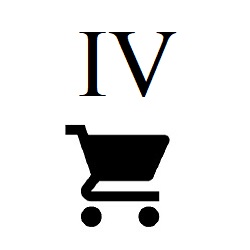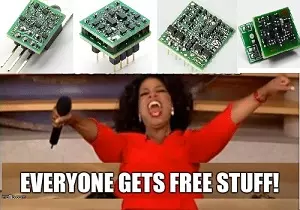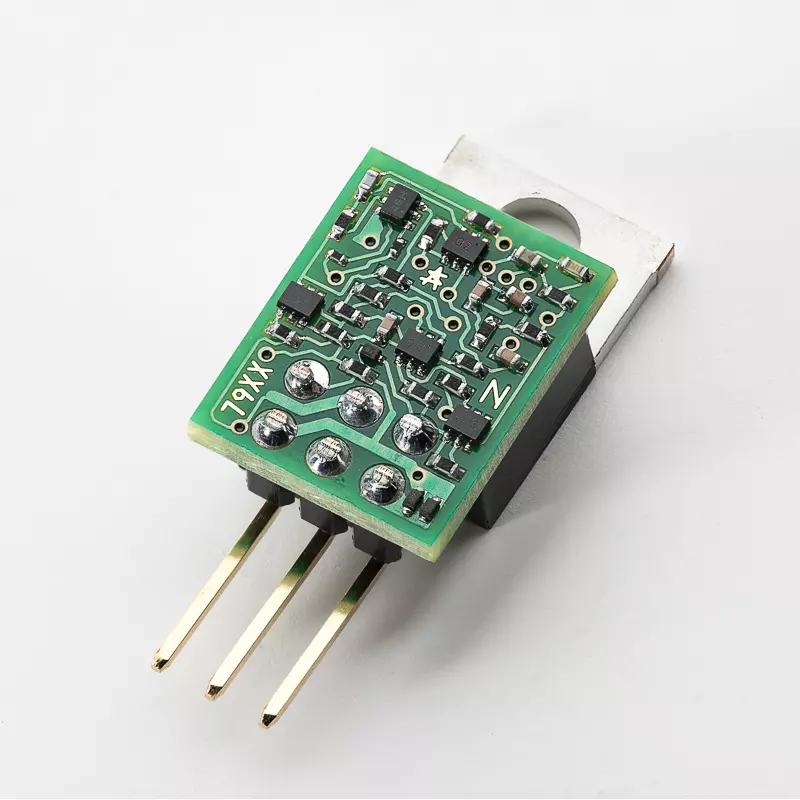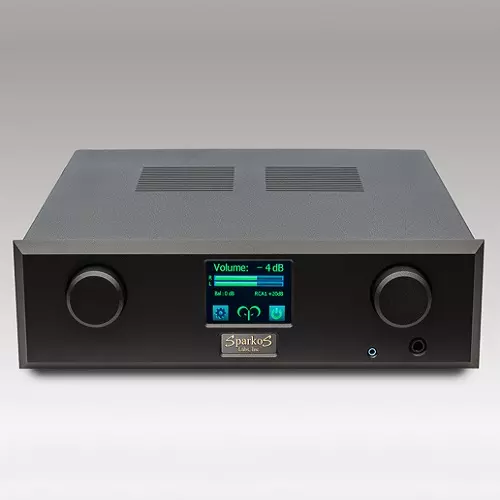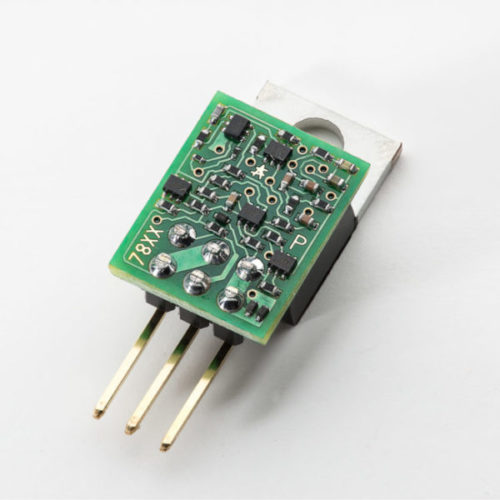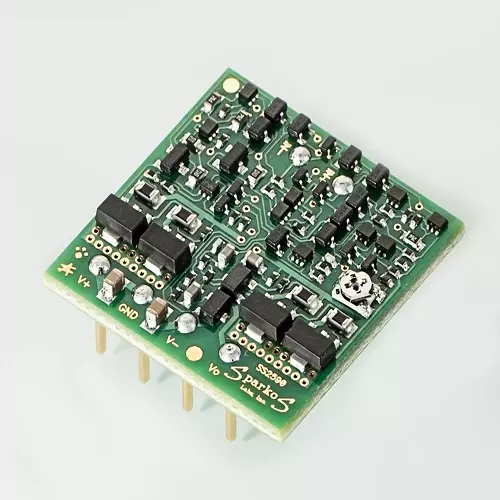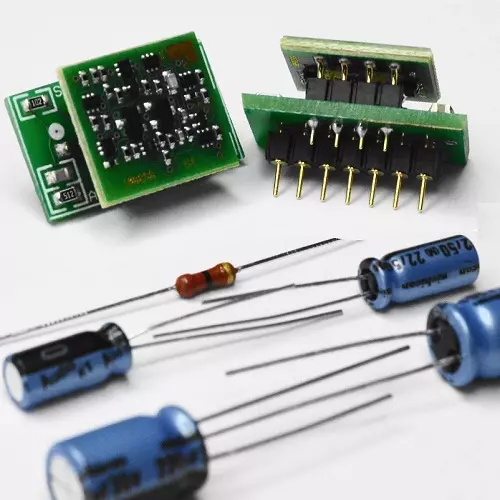Audio Power Supplies
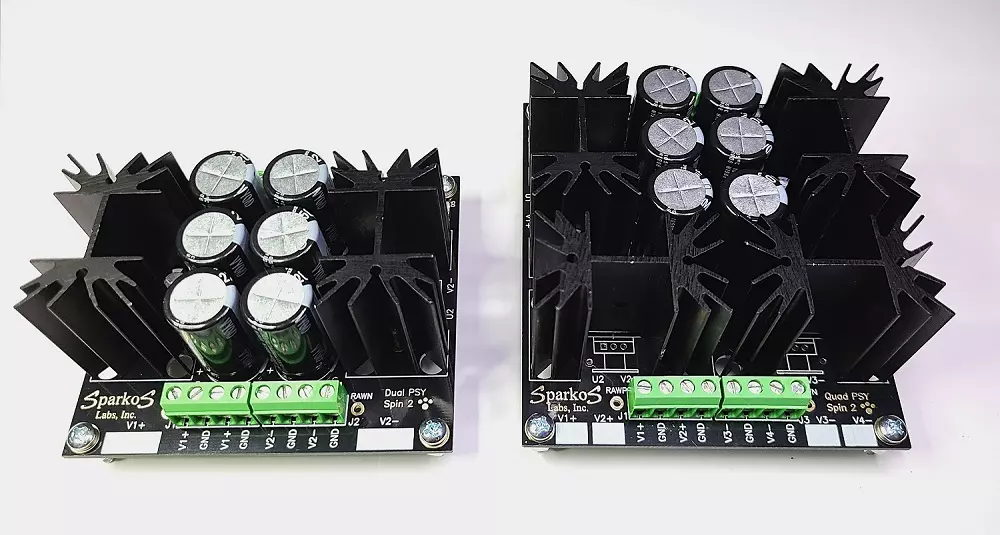
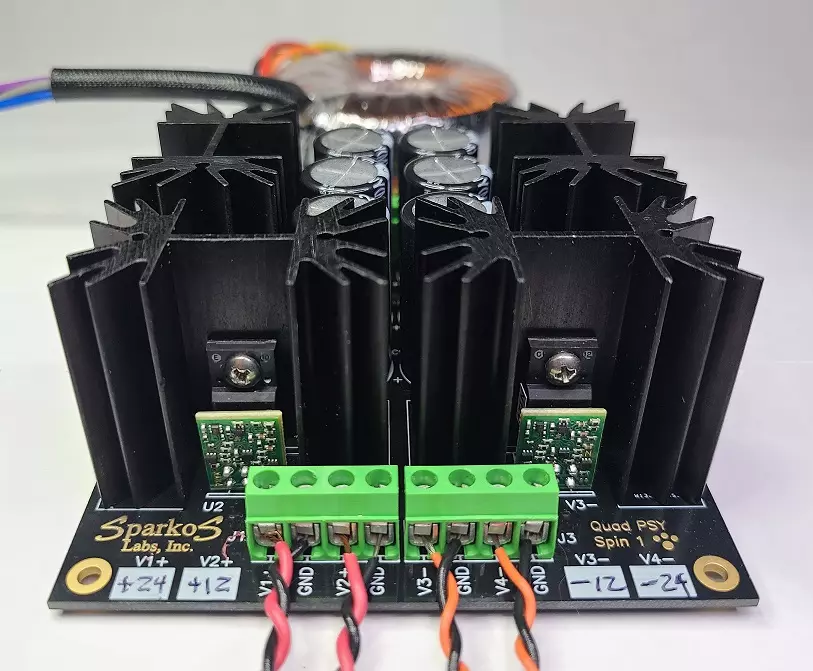
The ultimate Power Supply for Audio:
We now have power supply boards to allow people to build their own power supplies. Just choose and install some voltage regulators, add a power transformer, and get either a dual power supply (1 positive and 1 negative output) or a quad power supply (2 positive and 2 negative) regulated output voltages.
Features include easy to use screw clamp connectors for the AC / transformer input and regulated DC voltage outputs. Access to the raw unregulated DC is also provided. Next, the regulators mount on massive heat sinks capable of dissipating 3.5 watts each, fed from six 2200uF 50V Nichicon filter capacitors. Charge current softening resistors are also employed to reduce the transformer magnetic fields and noise. Finally, the fabled 100uF Panasonic EEU-FR1H101B output capacitor is used to decouple each regulated output rail.
These power supplies are sold as kits with all of the mounting hardware supplied. Including the hardware to mount either two or four 78XX / 79XX class voltage regulators, as well as the mounting hardware and standoffs for the PCB.
Subscribe now for a coupon code and a chance to win free devicesWinners picked at random monthly
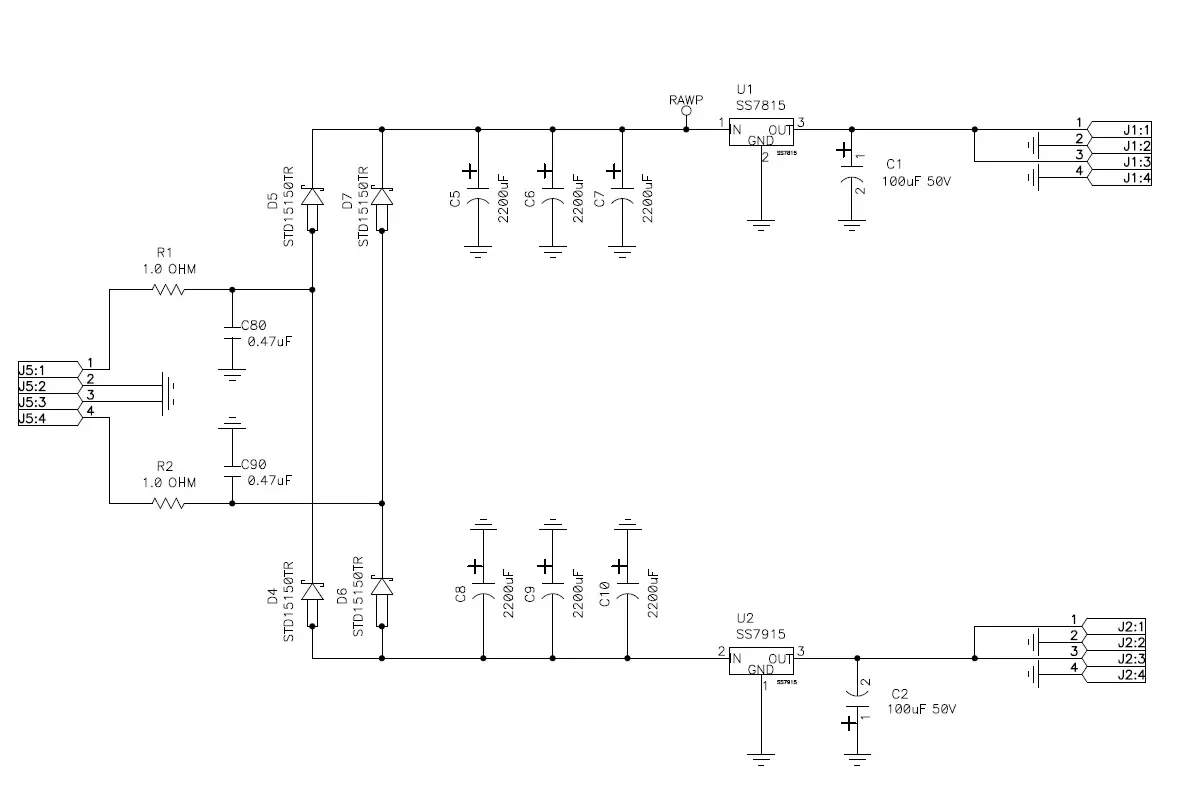
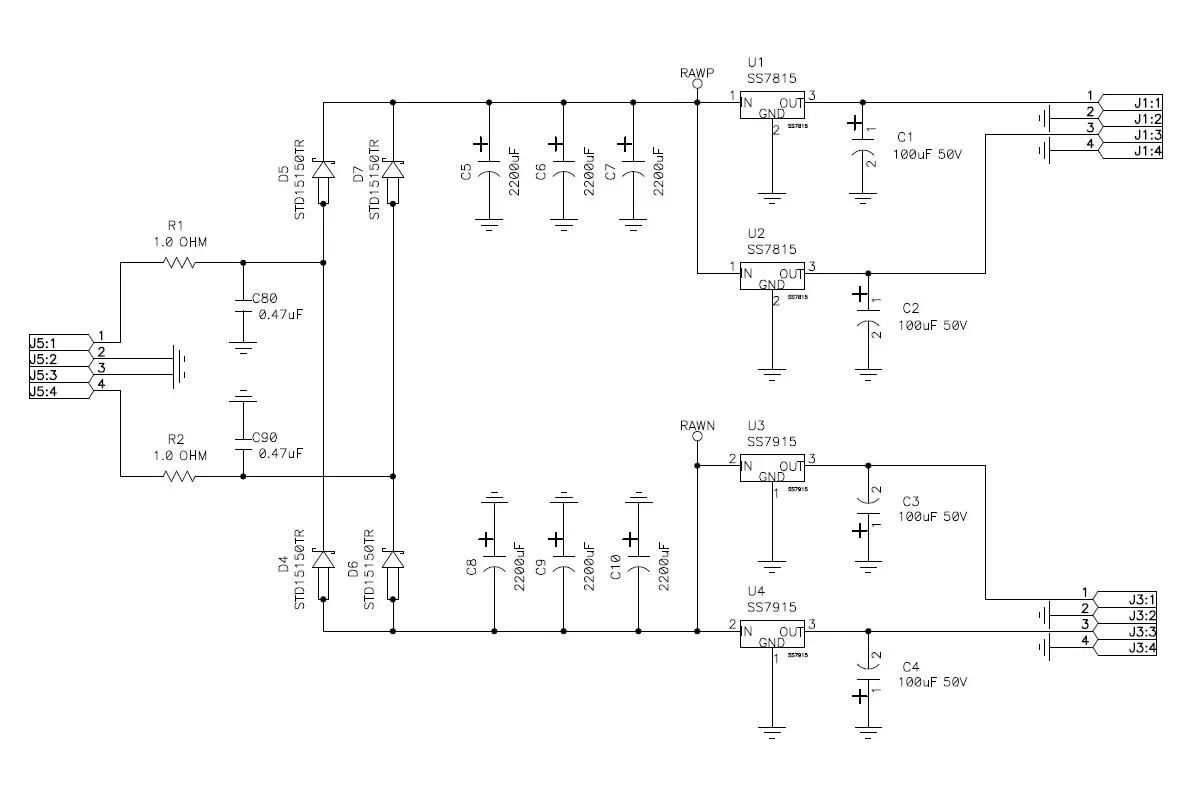
Power Supply Design....Done Right:
The full schematic for both the dual power supply (left) and quad power supply (right) are pictured above. The AC input connector is on the left of each schematic, and is intended to connect to the secondary of a center tapped power transformer. More on power transformer selection can be found below.
The incoming AC first passes through a 1 ohm power resistor to soften the charging current into the main reservoir capacitors. Softening the charging / inrush current will reduce the magnetic fields radiated by the transformer and, in turn, reduce the magnetic field pickup and hum. The small 0.47uF film capacitor that follows serves to provide additional filtering for any noise that maybe coming in on the AC line. Next, 4 high speed, low noise Schottkey diodes form the bridge rectifier circuit followed by a parallel array of 6 nichicon 2200uF 50V main reservoir capacitors providing 6600uF total power supply capacitance per rail. Finally, the voltage regulators will regulate the raw DC from the rail capacitors down to the desired output voltage.
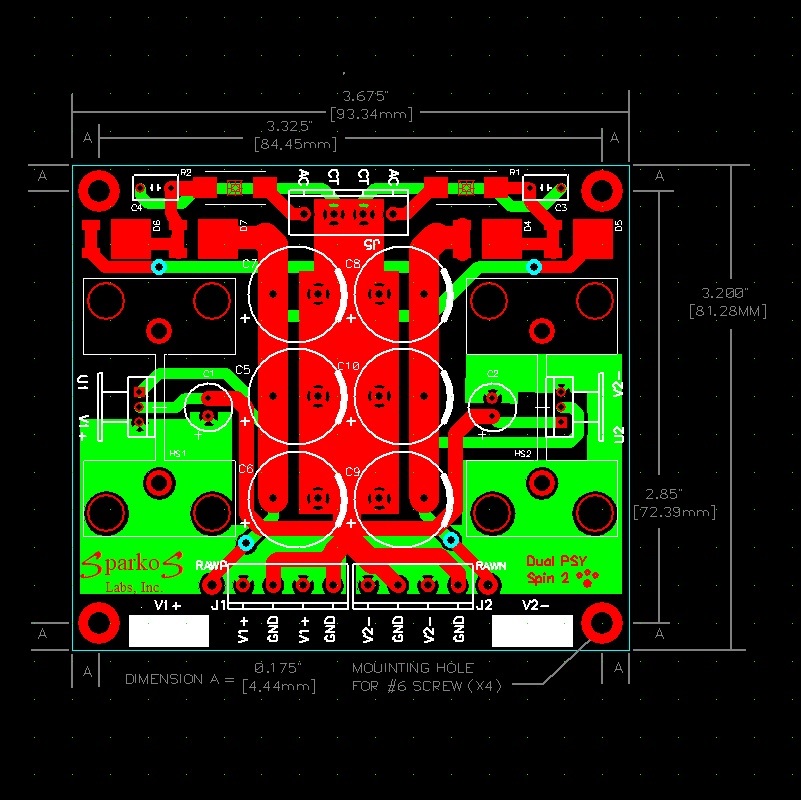
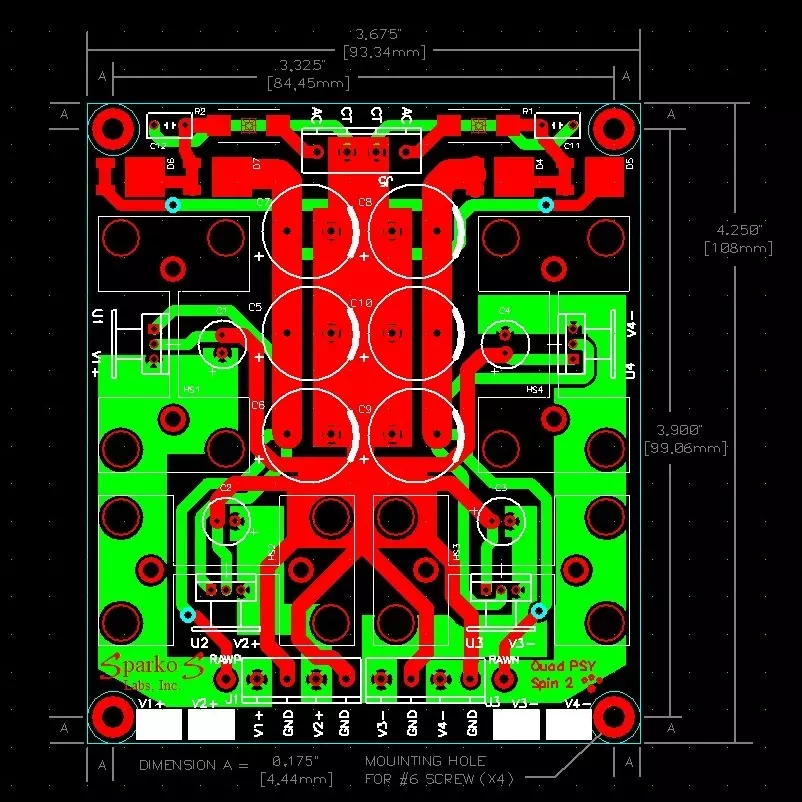
Power Supply Layout...Done Right:
The PCBs are designed with a properly implemented star grounding scheme, and the regulated outputs are ordered as Power Ground Power Ground to easily facilitate using twisted wiring to the loads. Underneath each 3.5 Watt heat sink are some ventilation holes that are drilled into the PCB to allow air to pass through the heat sinks, enhancing their heat shedding capacity. Massive planes of 1 ounce gold plated copper carry the charging and load current of the power supply. The board has 4 mounting holes that will accept #6 mounting hardware and standoffs, which are included in the kit.
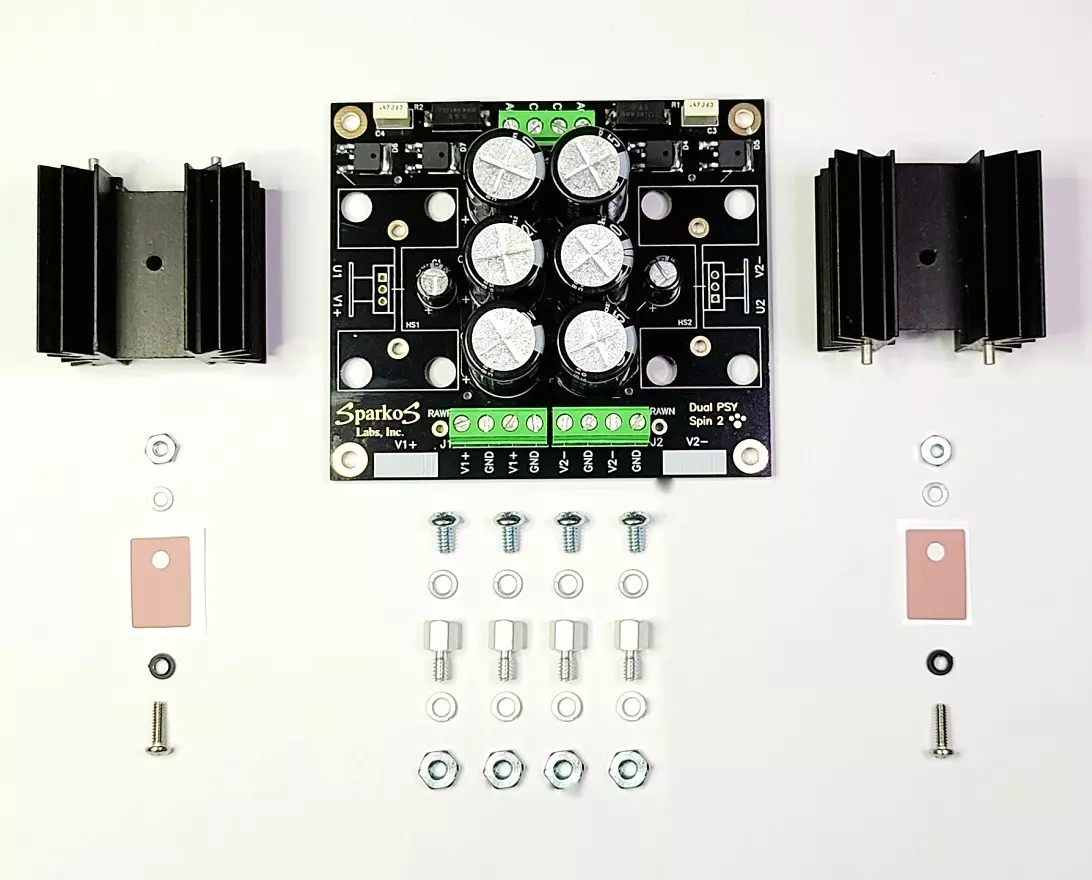
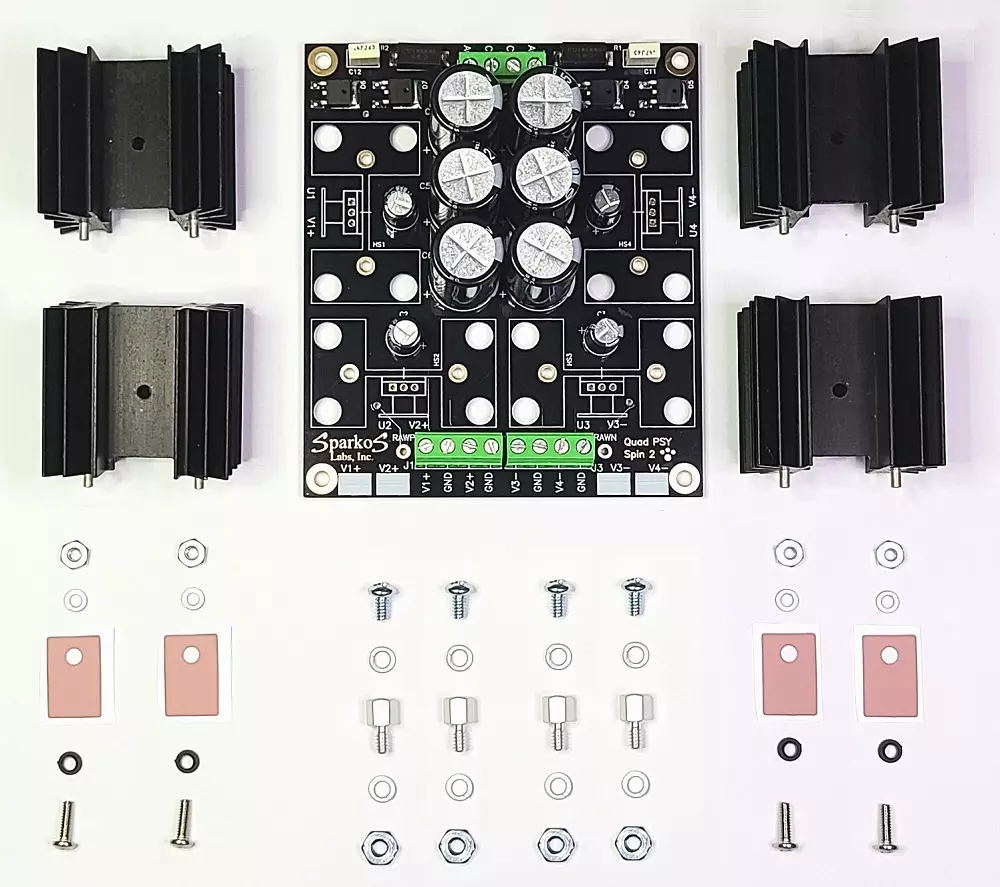
Complete power supply Kits:
Each kit comes with the appropriate number of 3.5 Watt heat sinks and regulator mounting hardware including #4 screws, nuts, nylon insulating washer, and TO220 size thermal interface pads. The heat sinks are not attached to the PCB as it is easier to mount the regulator to the heat sink, then mount the heat sink assembly with the regulator attached into the PCB as one piece. As such, soldering is required.
The Voltage regulators are sold separately. Of course we recommend our SS78XX and SS79XX discrete voltage regulators for the job, especially if the job is audio related. We offer 25% off all of our discrete voltage regulators if they are purchased in conjunction with these power supplies using coupon code REGS. Alternatively, any inferior IC 78XX / 79XX voltage regulator could be installed and used. This is only recommended if the load is non audio in nature. Examples of such loads would be for powering relay coils or motors, protection circuits, VU meters, or micro-controllers that do not process audio signals in the digital domain.
Included Mounting hardware for the power supply PCB consists #6 standoffs, screws, lock washers, and hex nuts. Because of things like Murphy's Law, we provide extras of every screw, nut and washer. And because that's just how we roll.
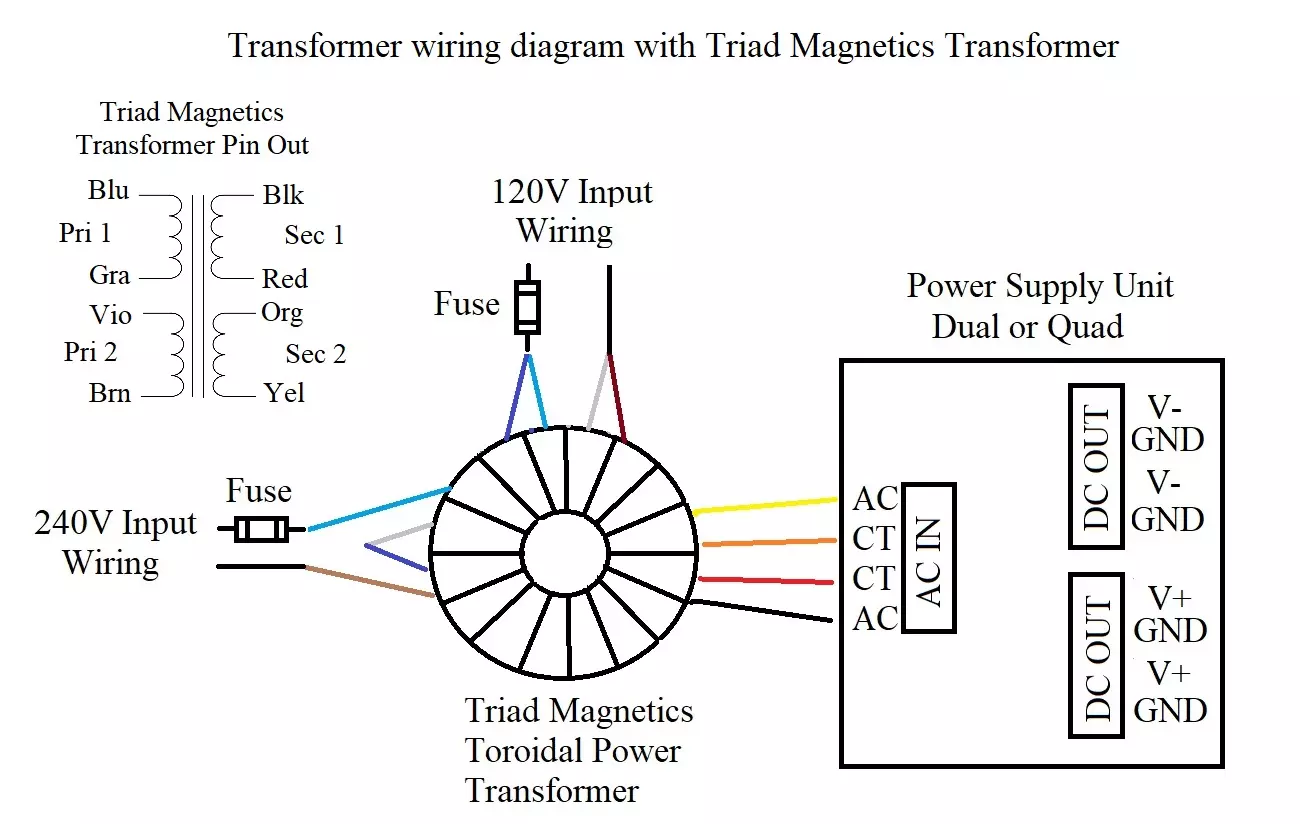
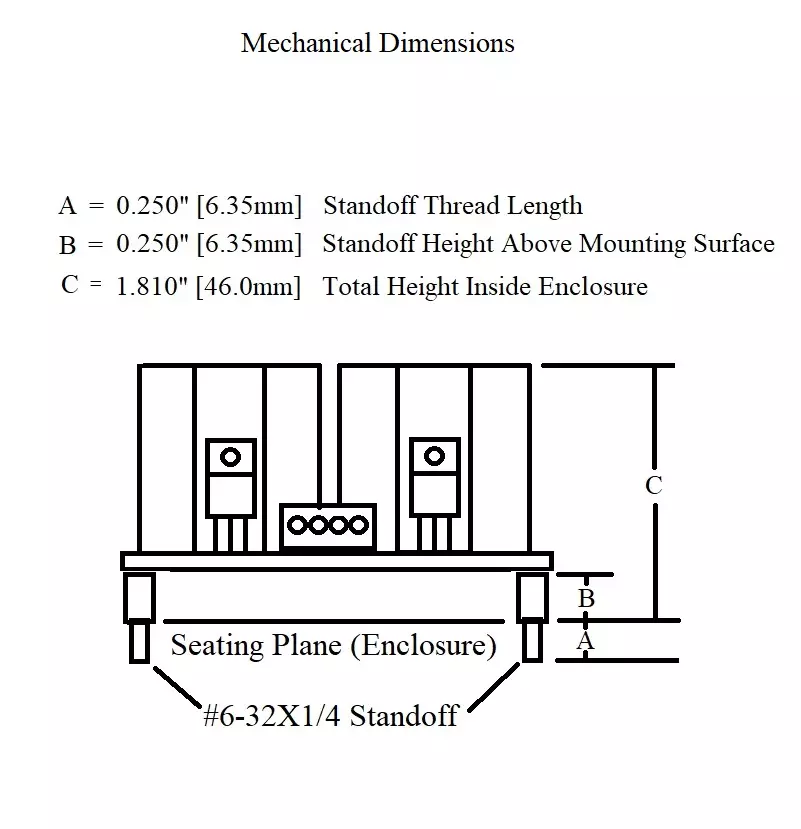
Transformer Selection and wiring:
We recommend using toroidal power transformers made by Triad Magnetics for use with these power supplies. They have very good performance, regulation, and emit less magnetic fields than the other toroids that we evaluated. Further shielding of the magnetic fields can be attained by wrapping the transformer exterior with Mu Metal or some other magnetic shielding material.
All of these transformers have dual primaries to enable 120/240V operation. Additionally, they have dual secondaries that should be used in Series Mode with these power supplies to generate split supplies with a center tap ground in the middle. In other words, Orange and Red will be tied together on the Power Supply Unit and form the center tap ground.
Be sure to observe the appropriate precautions when wiring transformers to the AC line, and be sure to include an adequately sized safety fuse.
Below is a table of Triad Magnetics transformers and their associated secondary voltages. The Raw DC voltage that one can expect from them under light and heavy loading is also noted. We have and stock the 9-0-9, 15-0-15, and 24-0-24 VAC Triad Magnetics transformers, and can be bought in conjunction with these power supplies.

Voltage Regulator Selection:
As mentioned, the voltage regulators are sold separately and must be installed by the user. As such, soldering is required. The transformer and in turn, the raw DC voltage should be selected to provide around 3 - 5 volts higher than the desired regulated output voltage. Even higher raw input voltages can be used, but care should be taken to not exceed about 3.5 watts of power dissipation in the voltage regulators.
For example, if one desires a +/-15 volt regulated power supply, then the VT30-830 power transformer (or equivalent) should be chosen. This will provide around +/-22 to +/-18 raw DC voltage to the regulator depending on the load. This will provide ample headroom to the regulator and allow it to maintain a constant output voltage of 15V regardless of load.
The power dissipation of the regulator can be calculated by:
(Vraw DC - Vreg) * Load Current.
Note that the first term (VrawDC - Vreg) is the voltage across the regulator and Vreg is the regulated output voltage.
Which voltage regulators should I use?
These. Sparkos Labs has a complete line of 78XX / 79XX discrete voltage regulators that are the perfect companion to these power supplies.
These devices have 14X lower noise, 44dB better input rejection, and at least 4X better load regulation than standard IC 78XX / 79XX voltage regulators can deliver.
You can get 25% off these devices when purchased in conjunction with either the Dual or Quad Power Supply using coupon code REGS.

Check out our other products and gear
You know what to do


